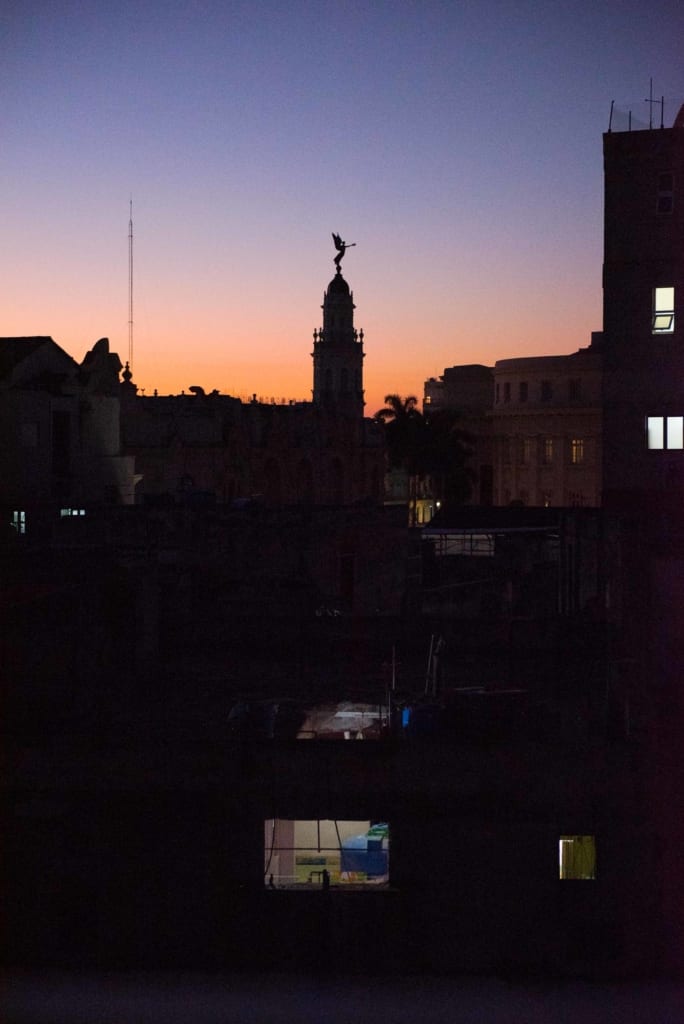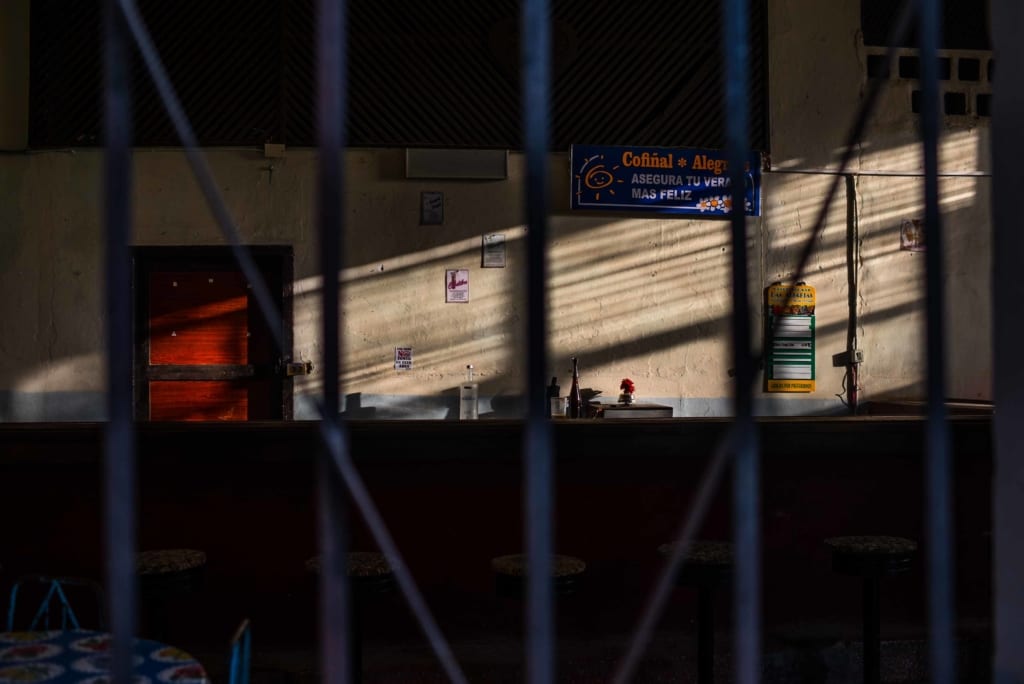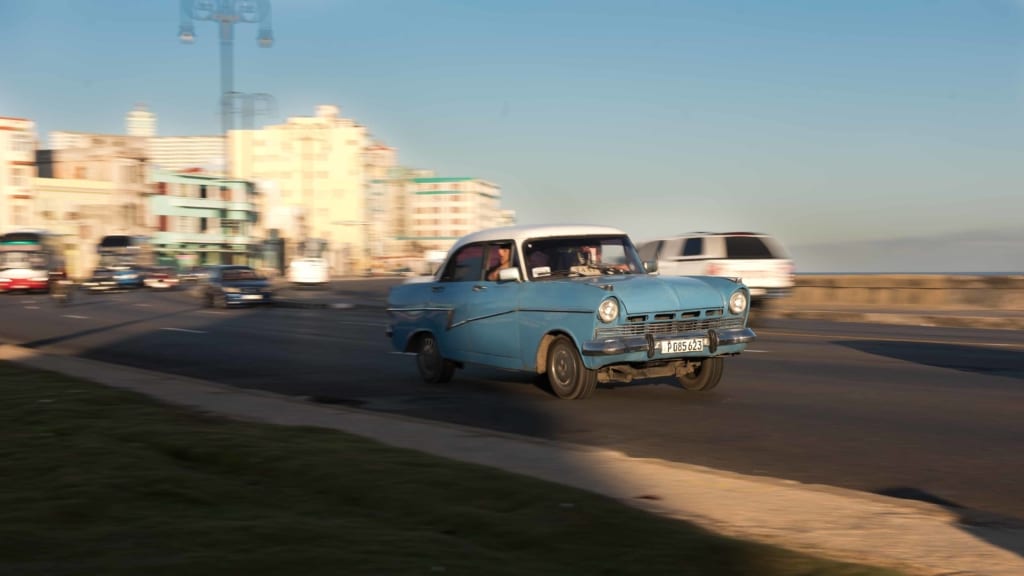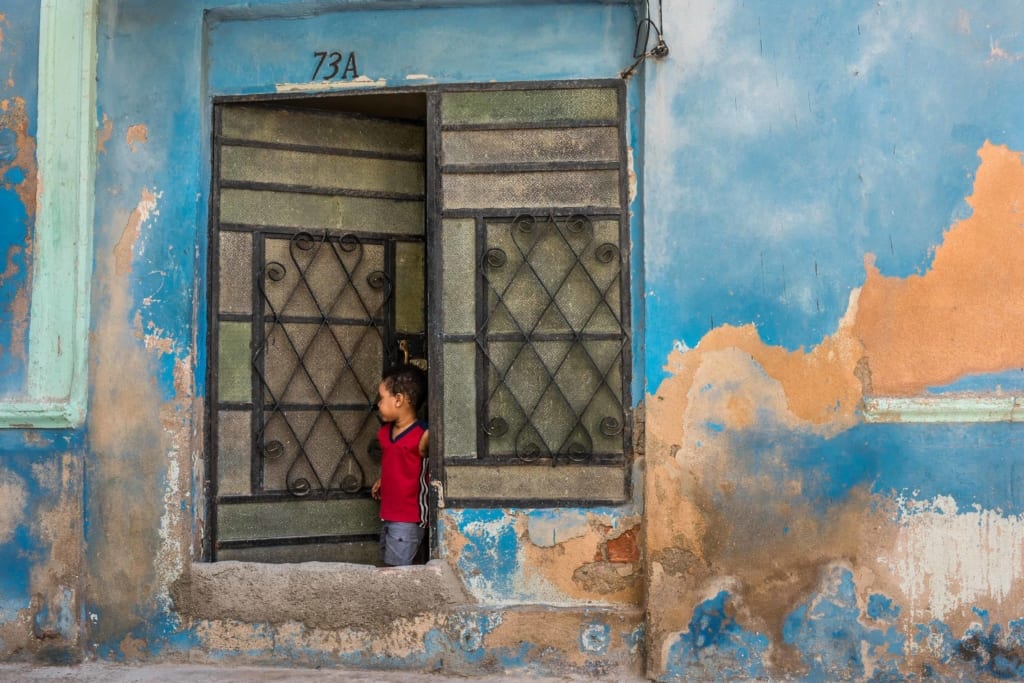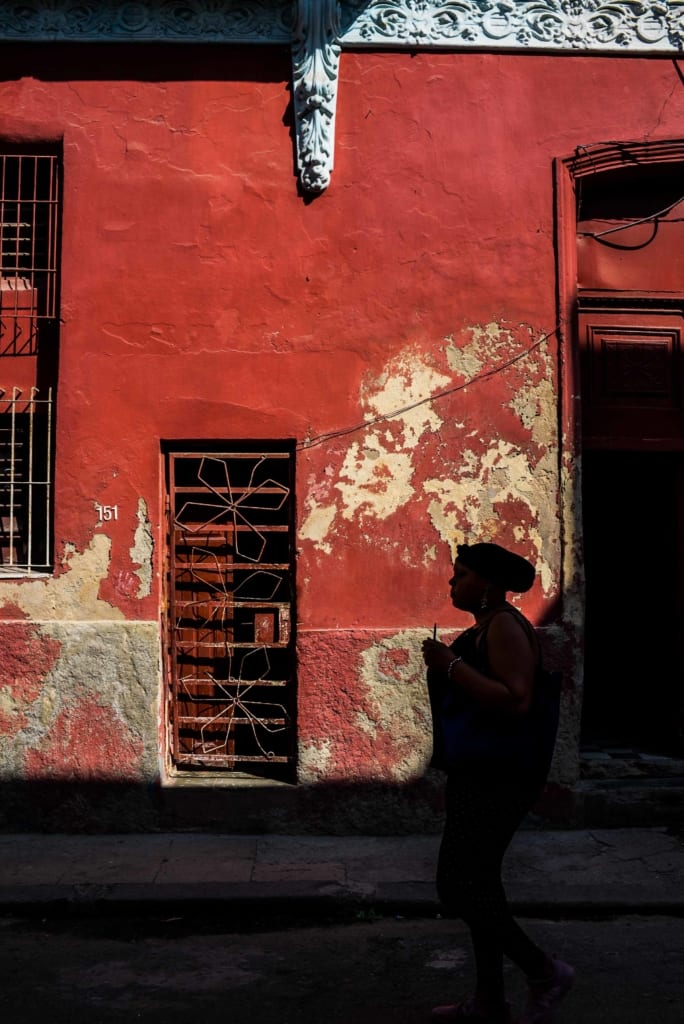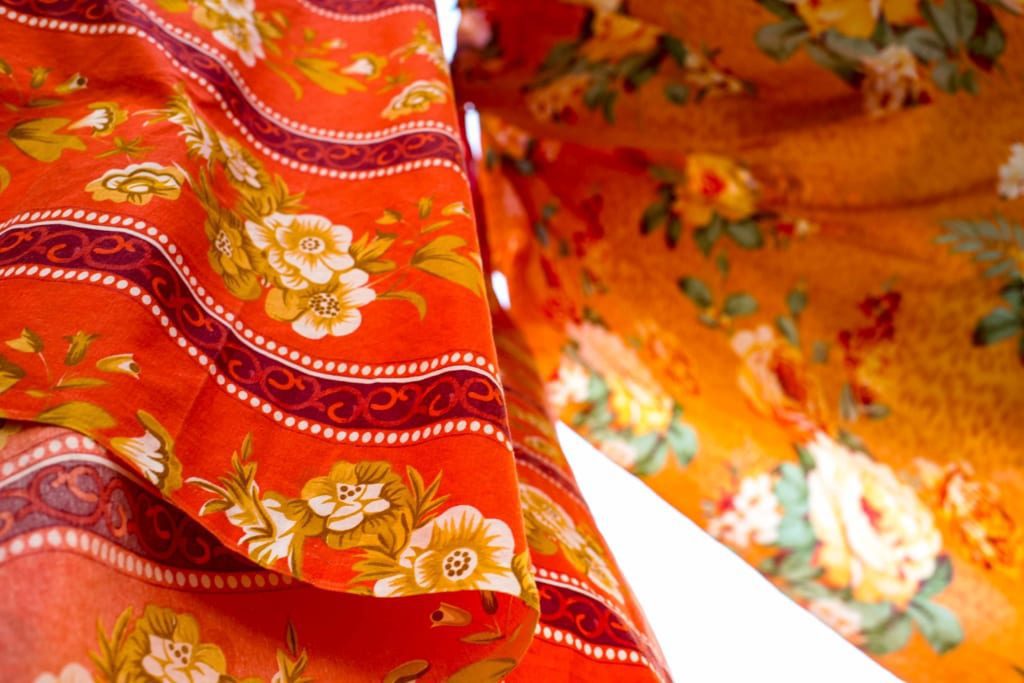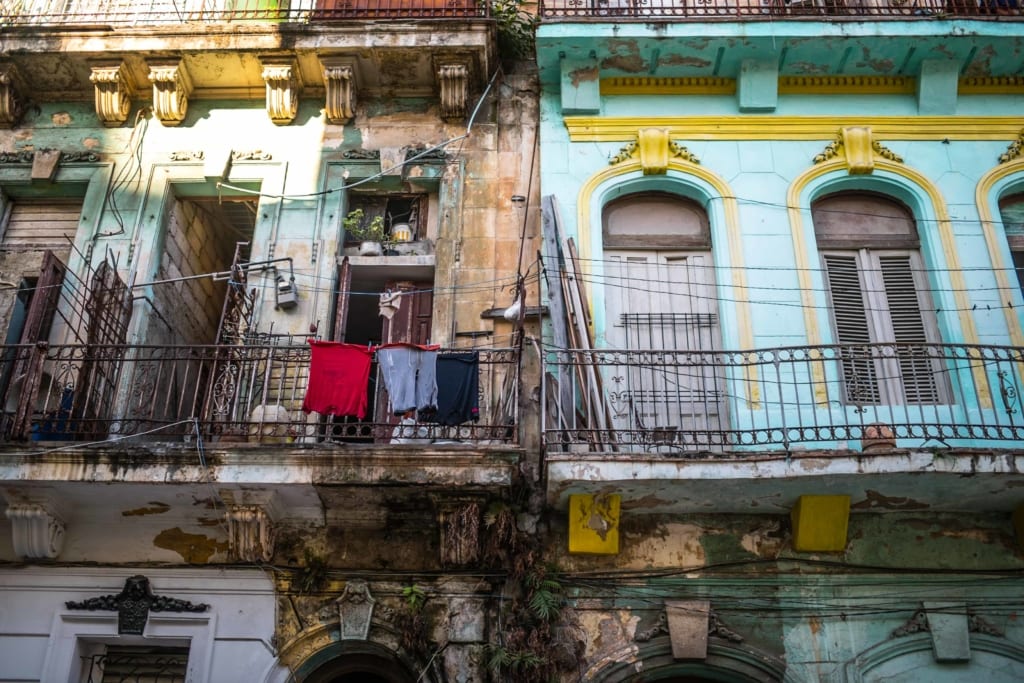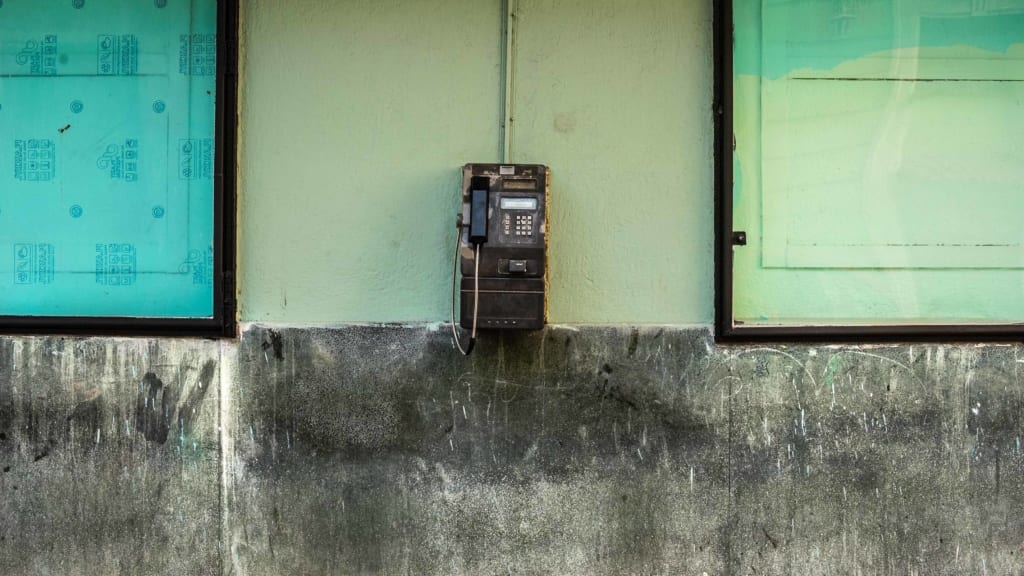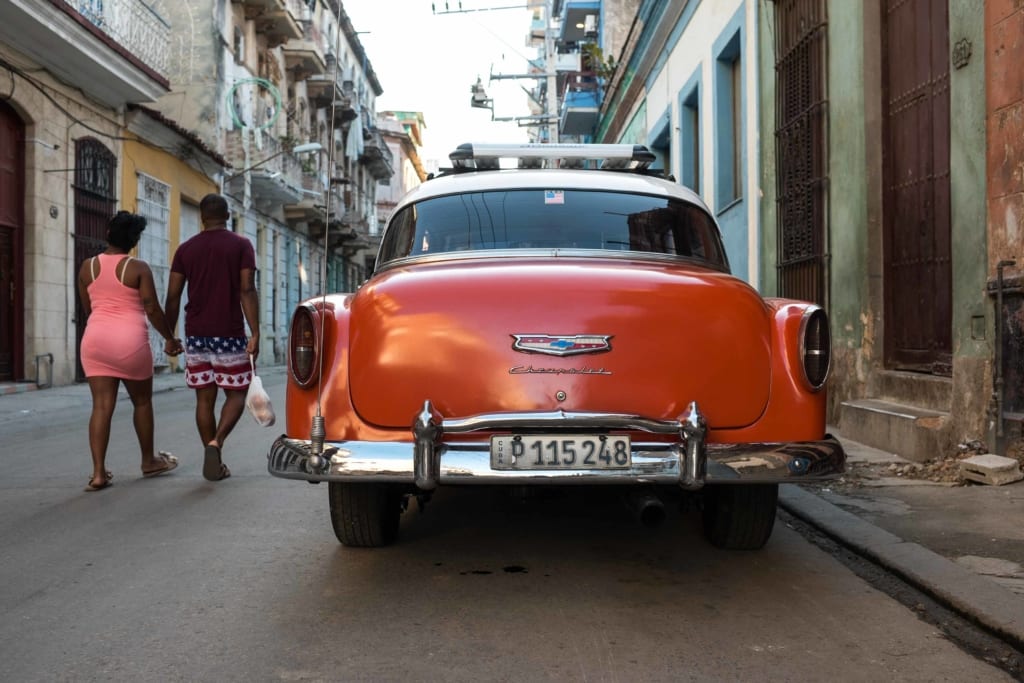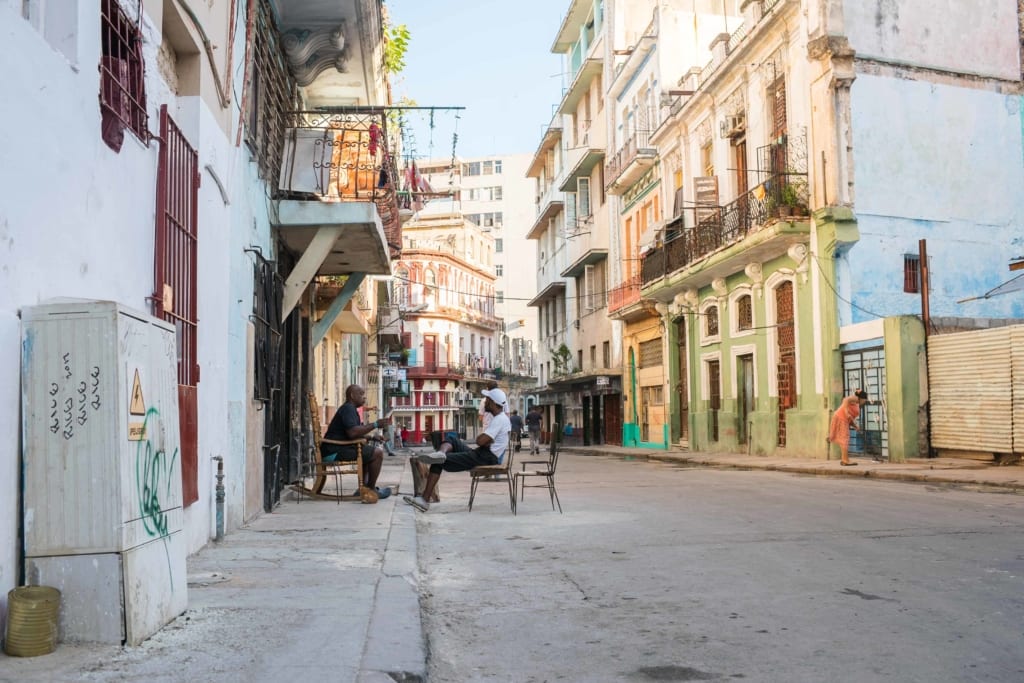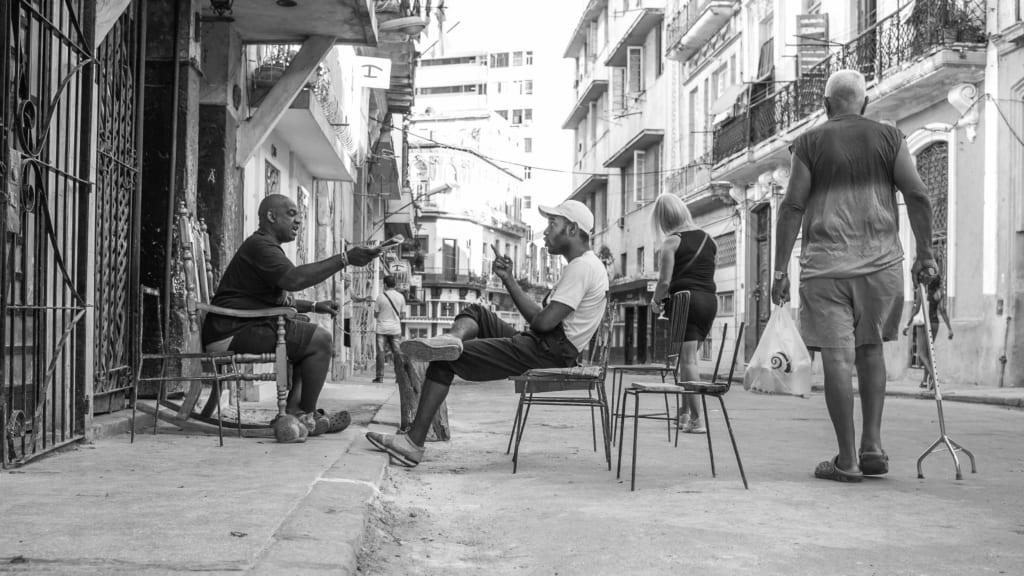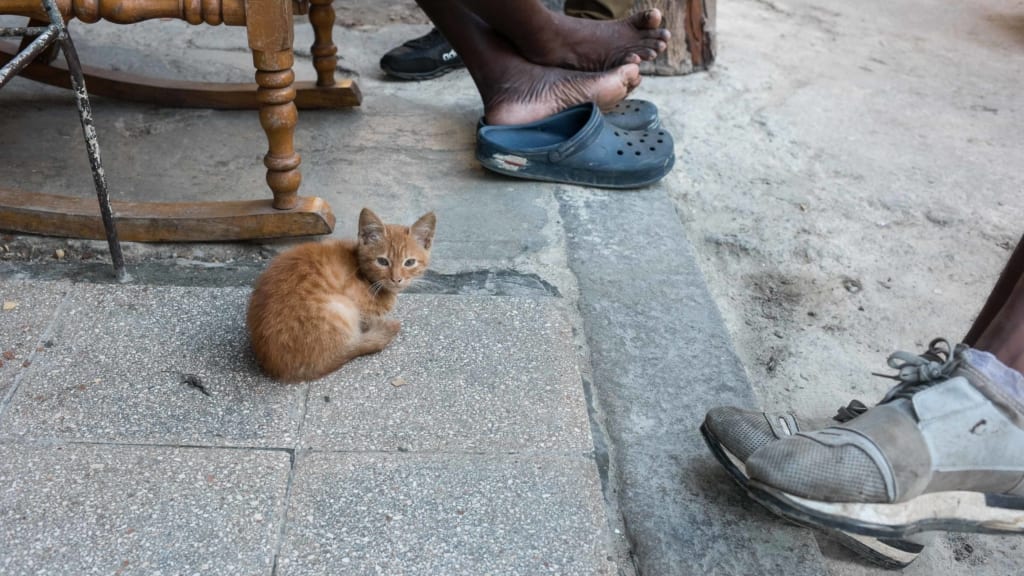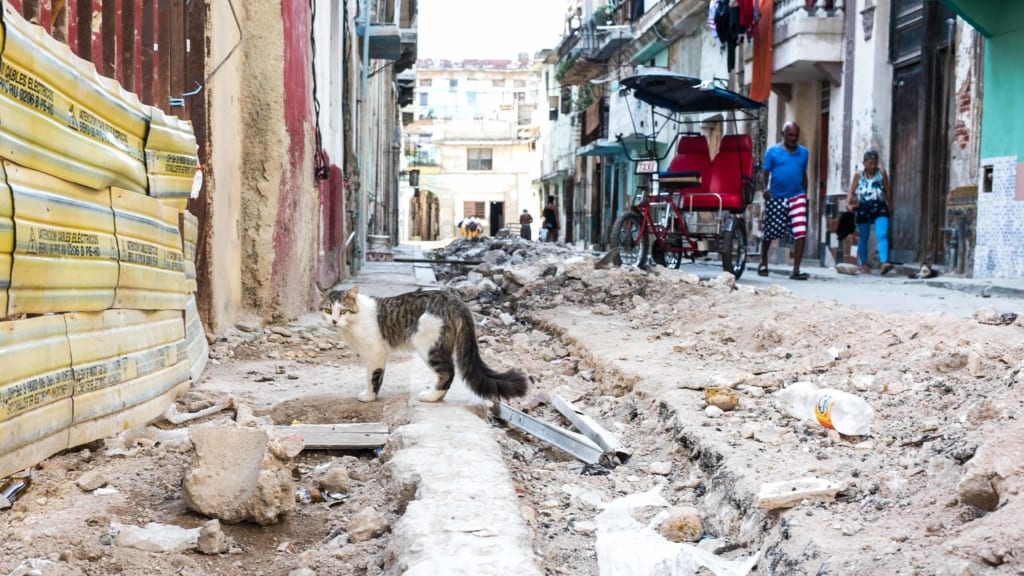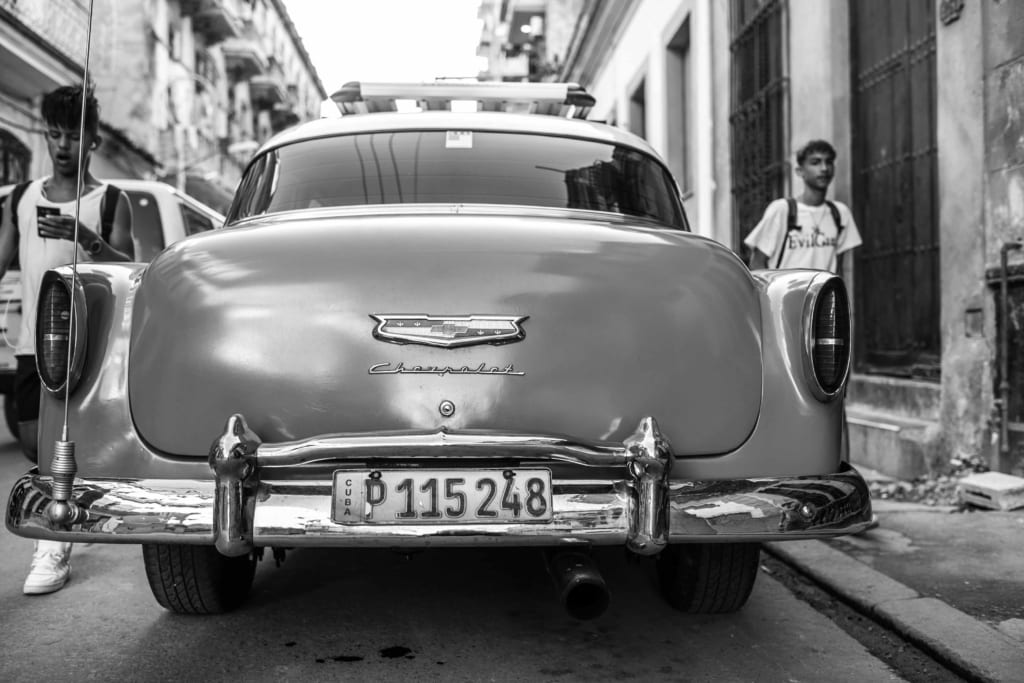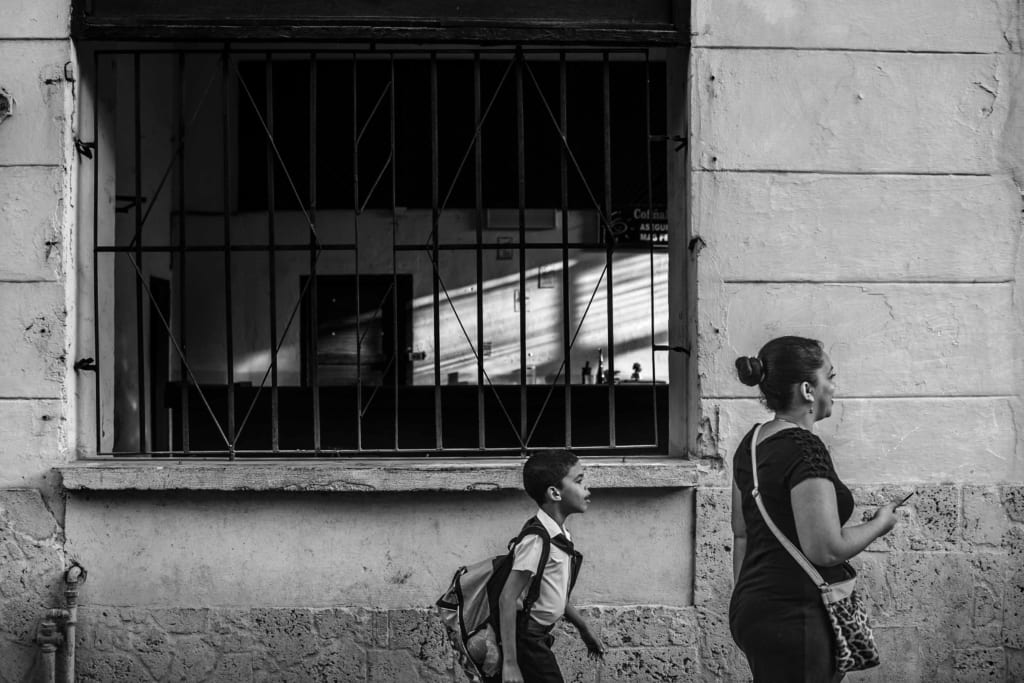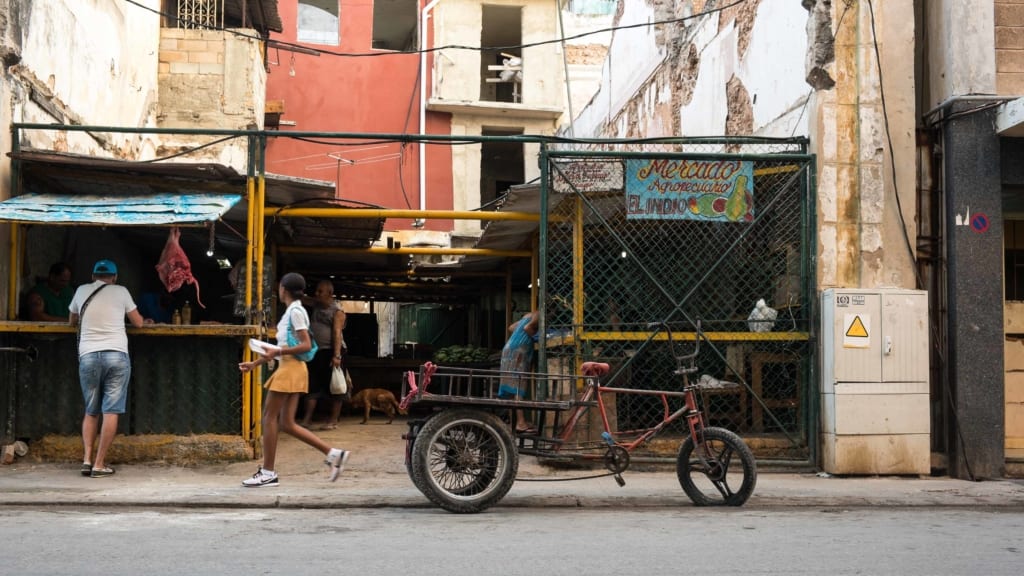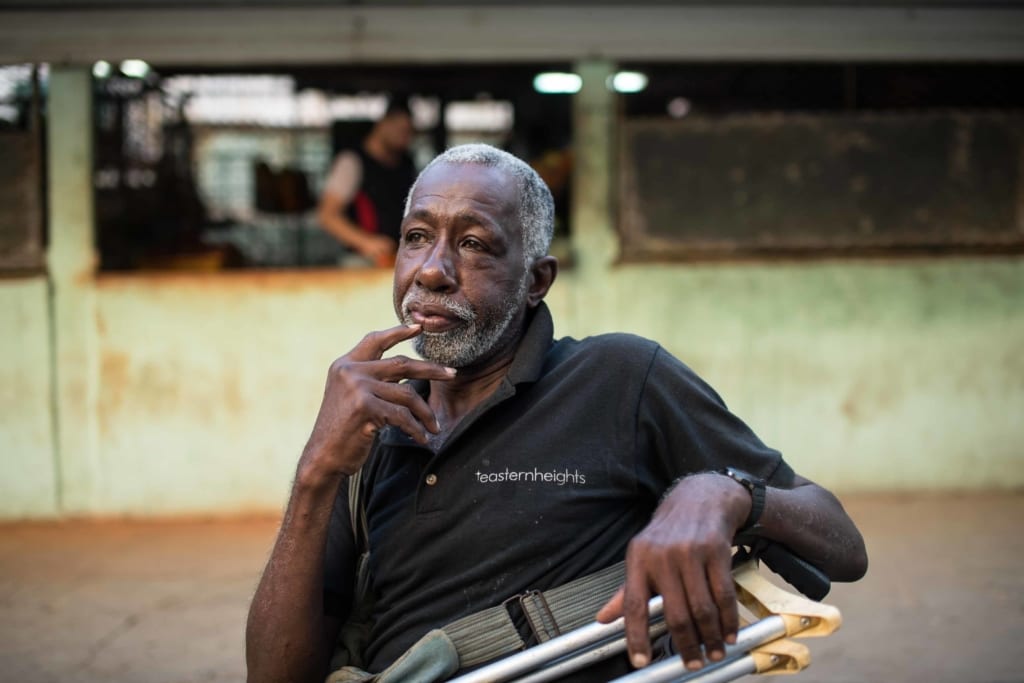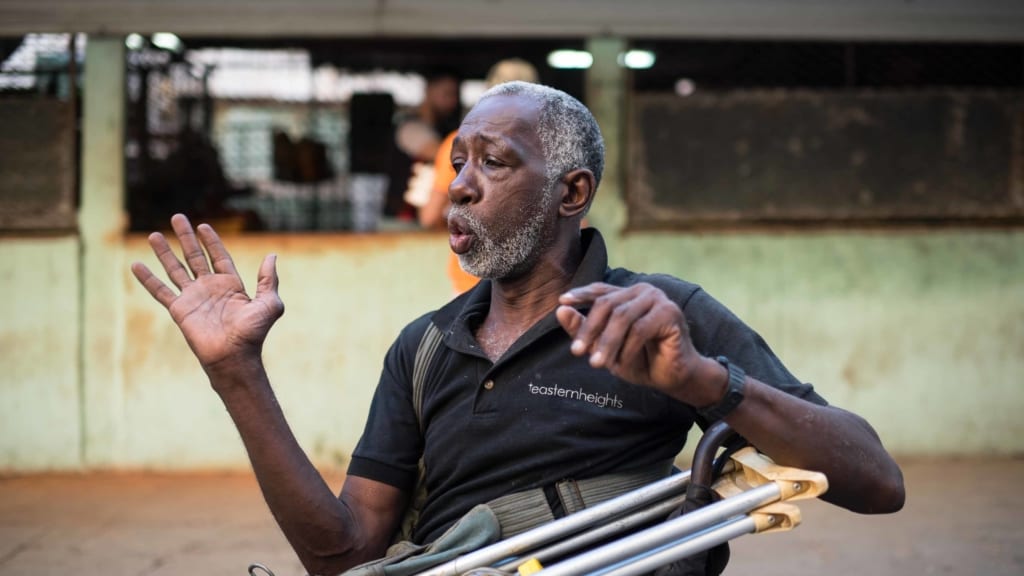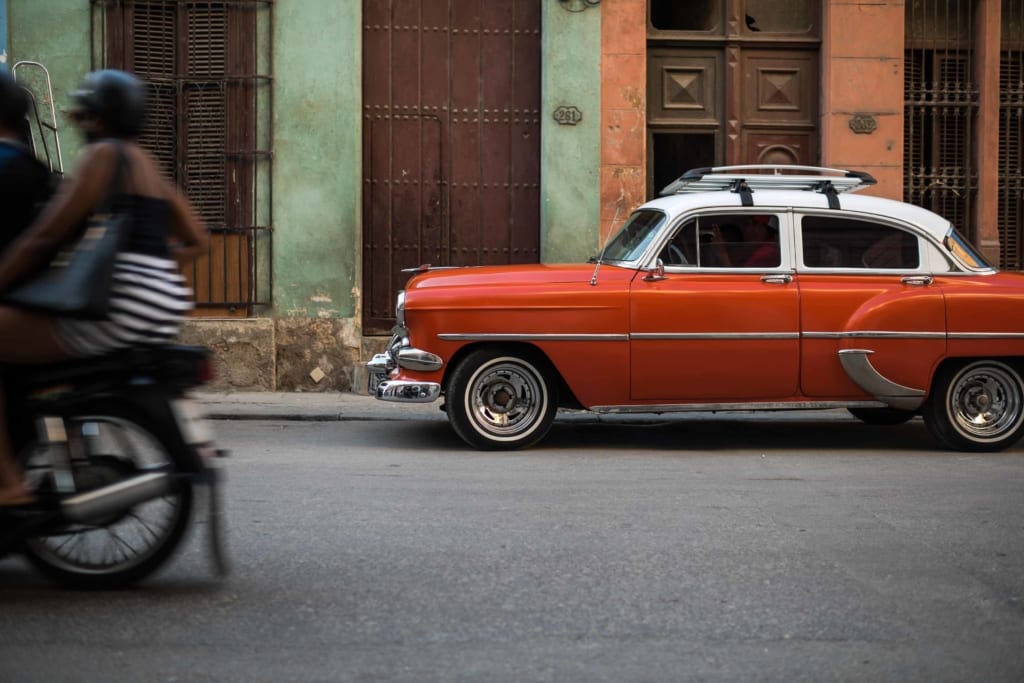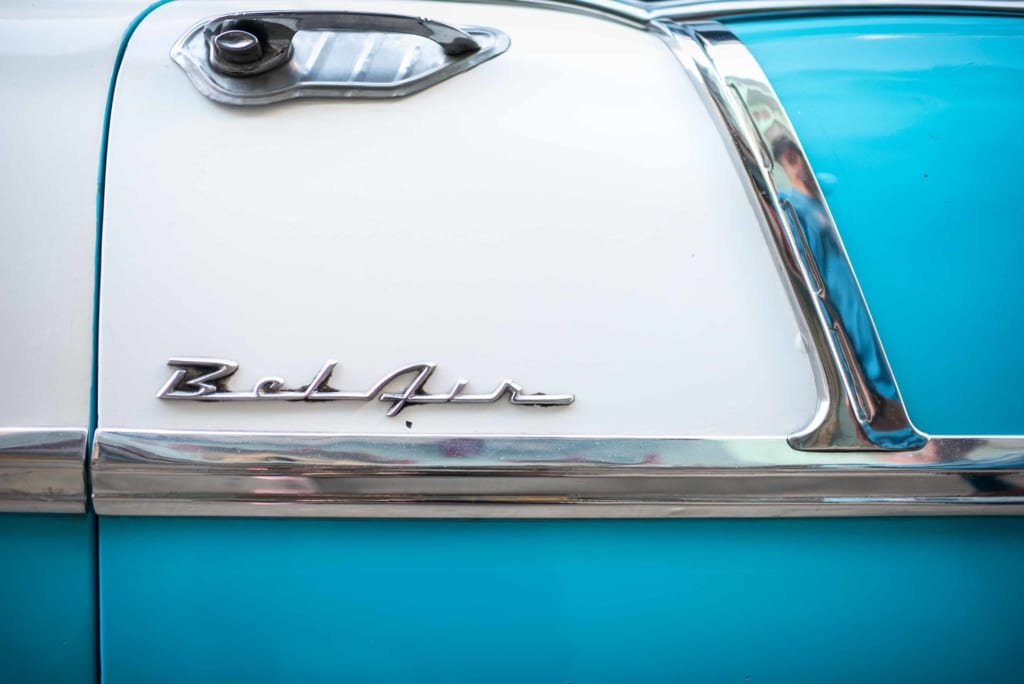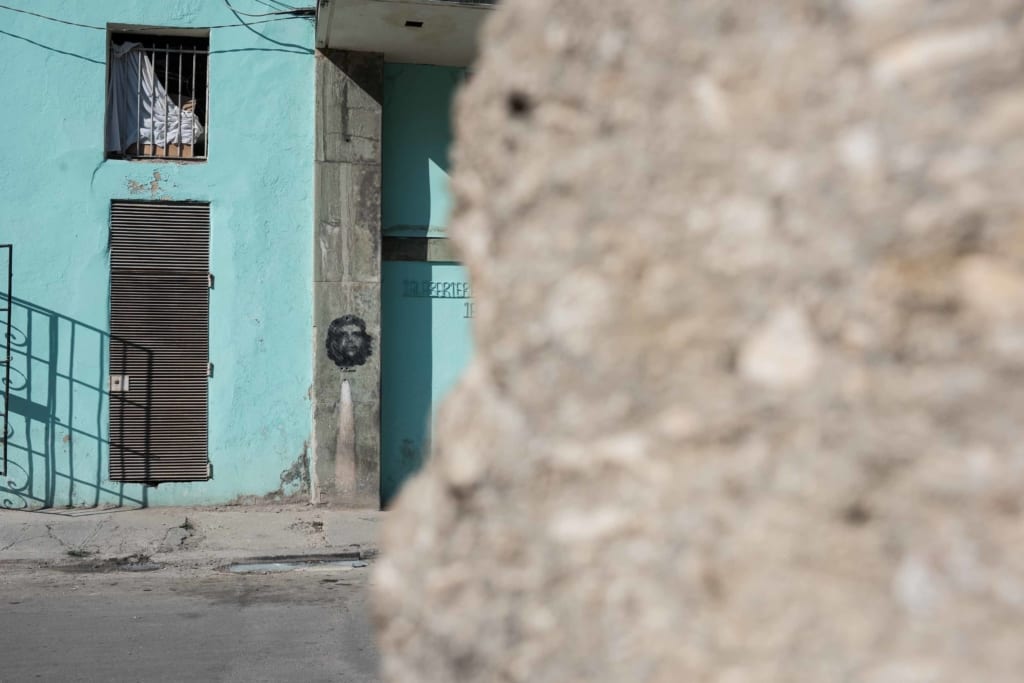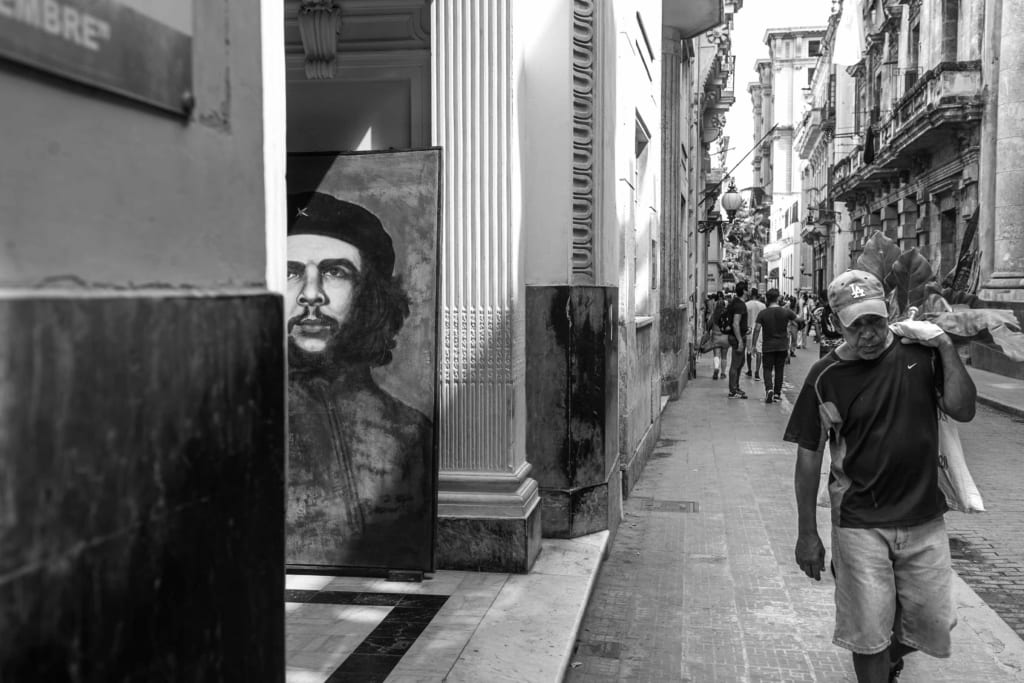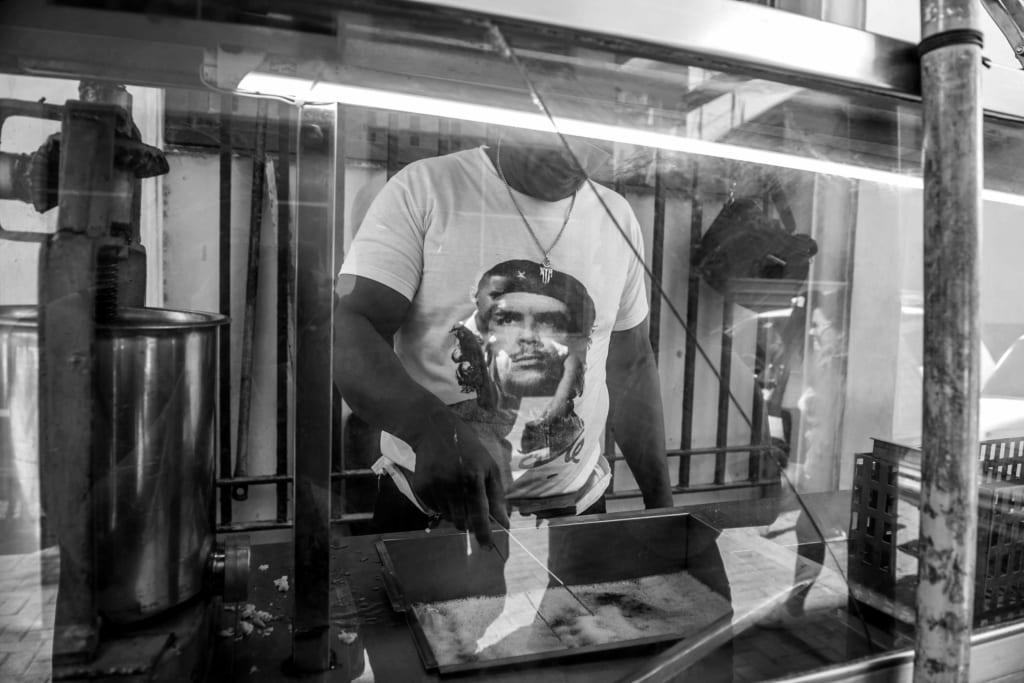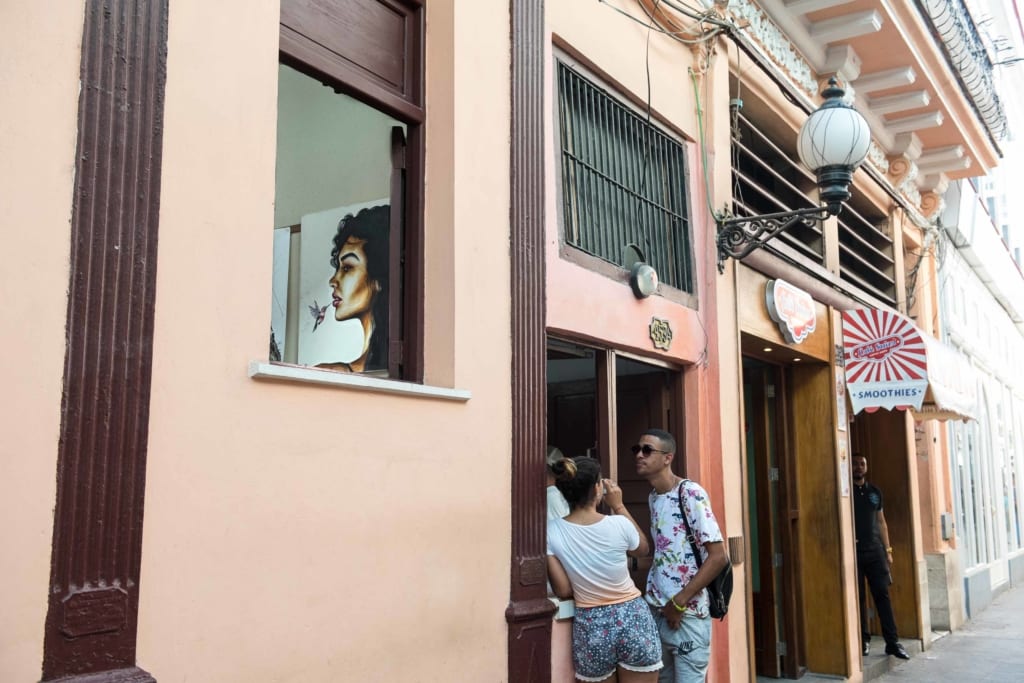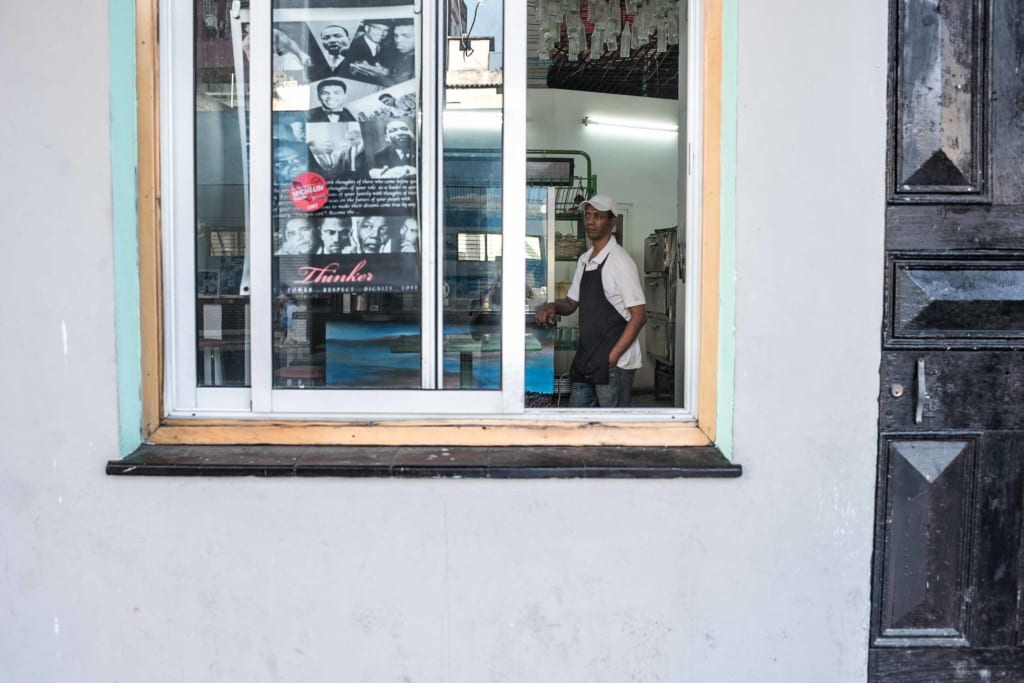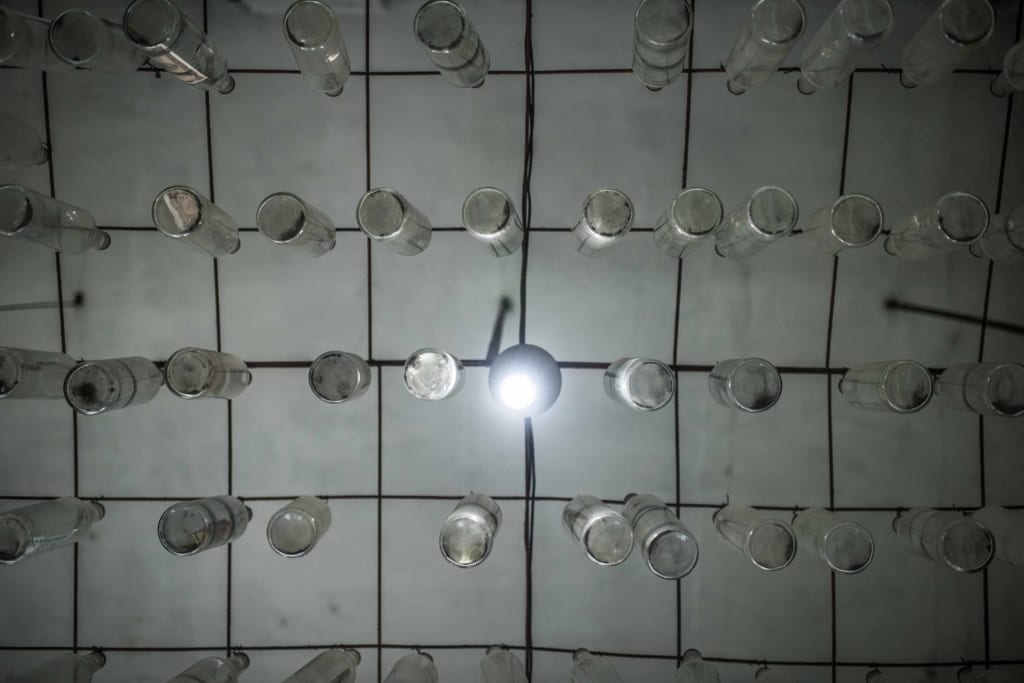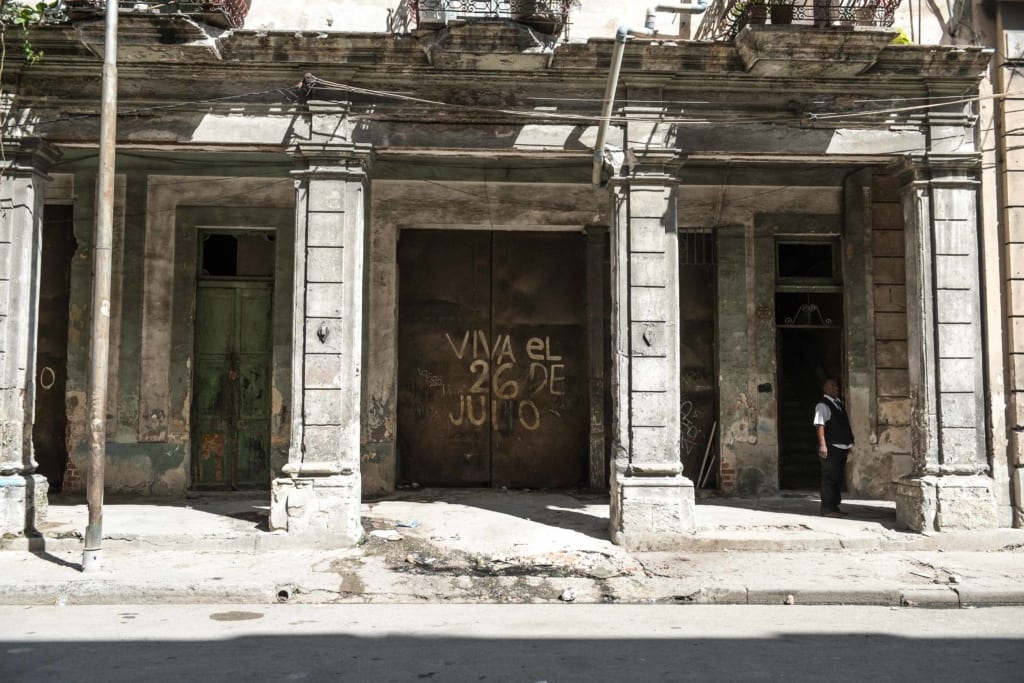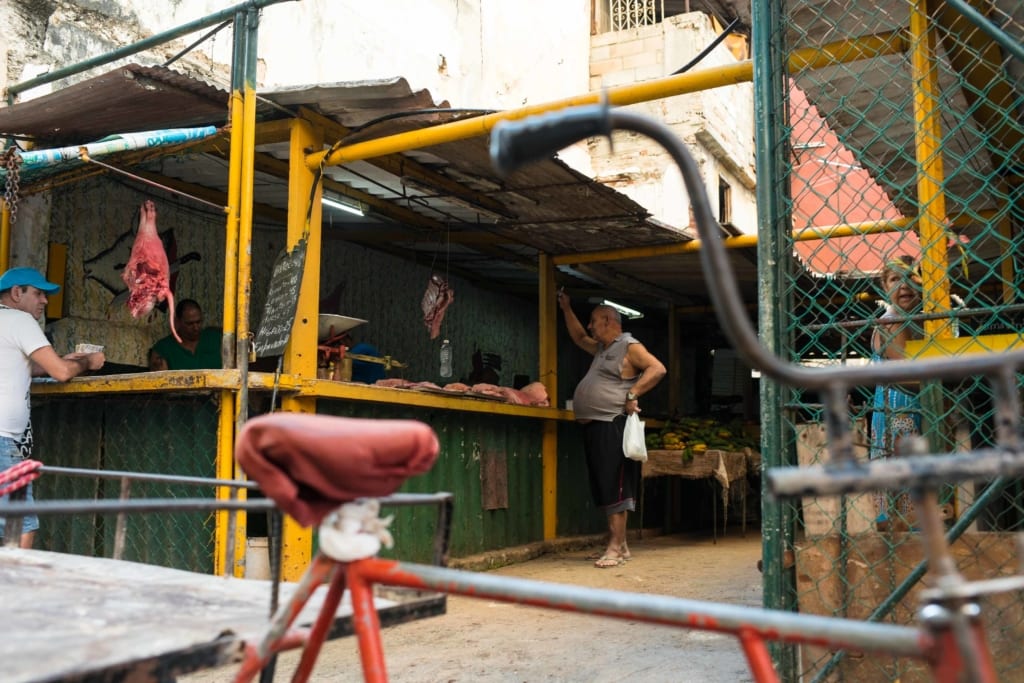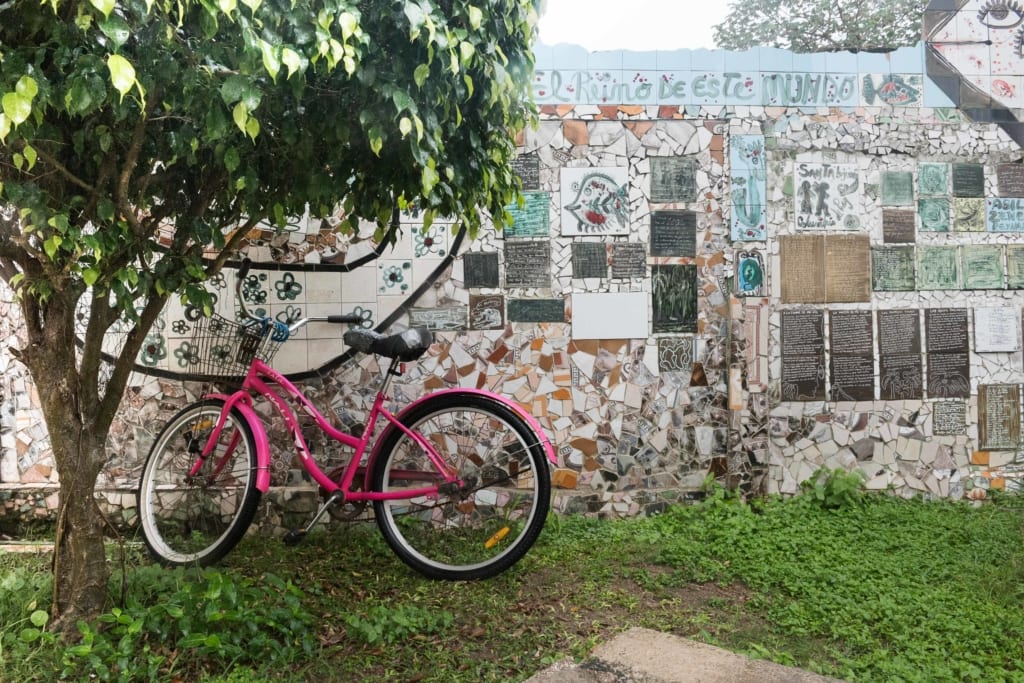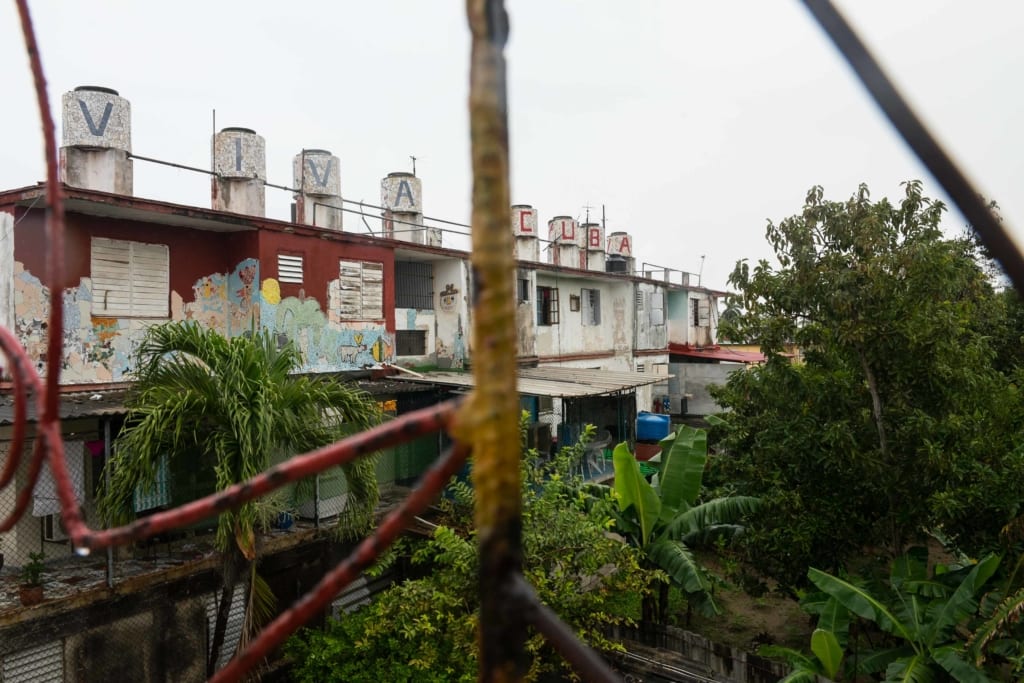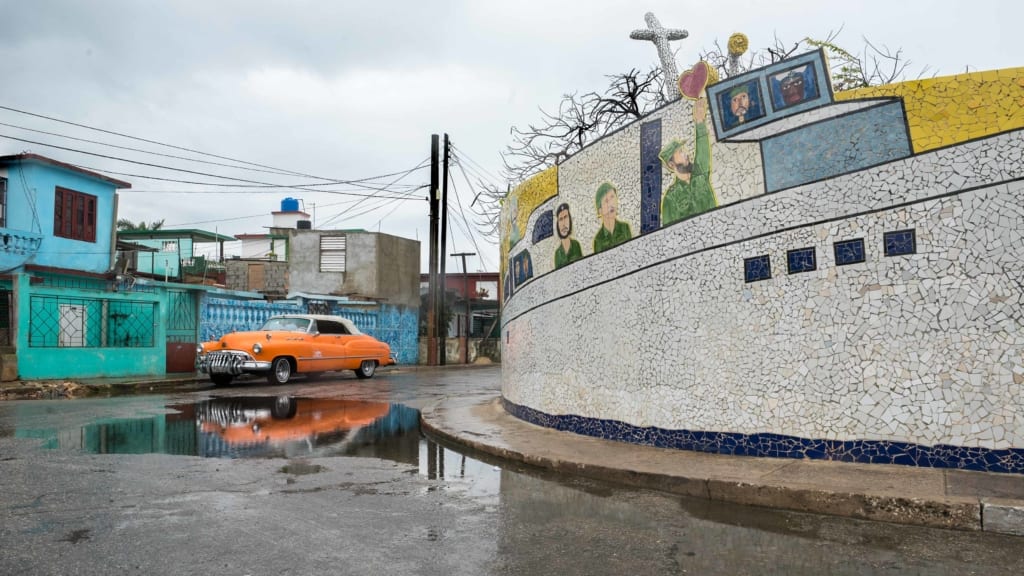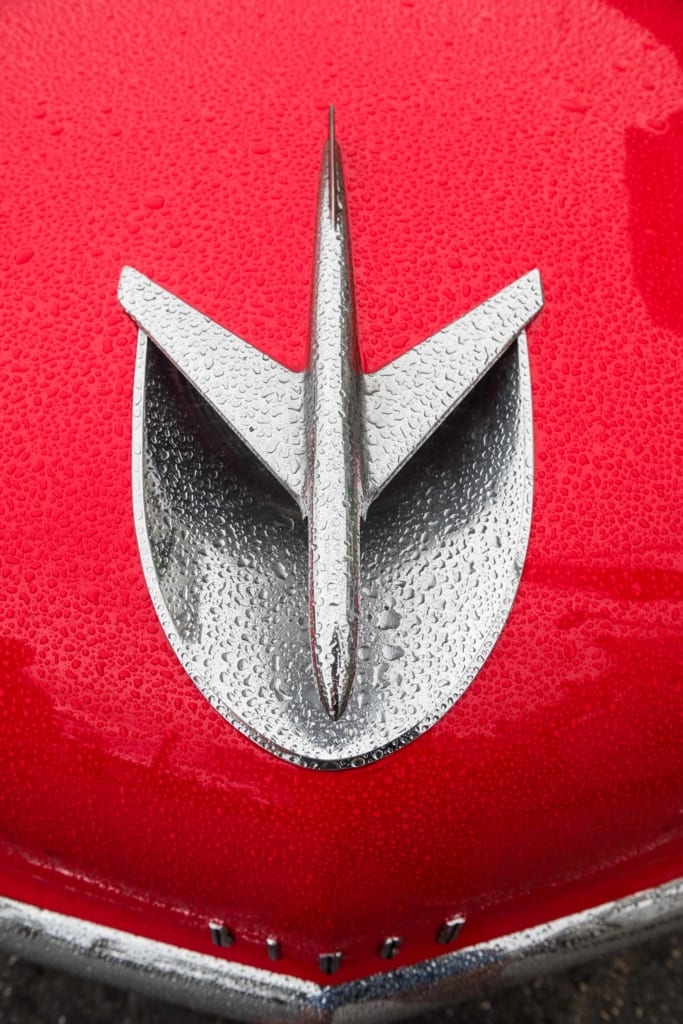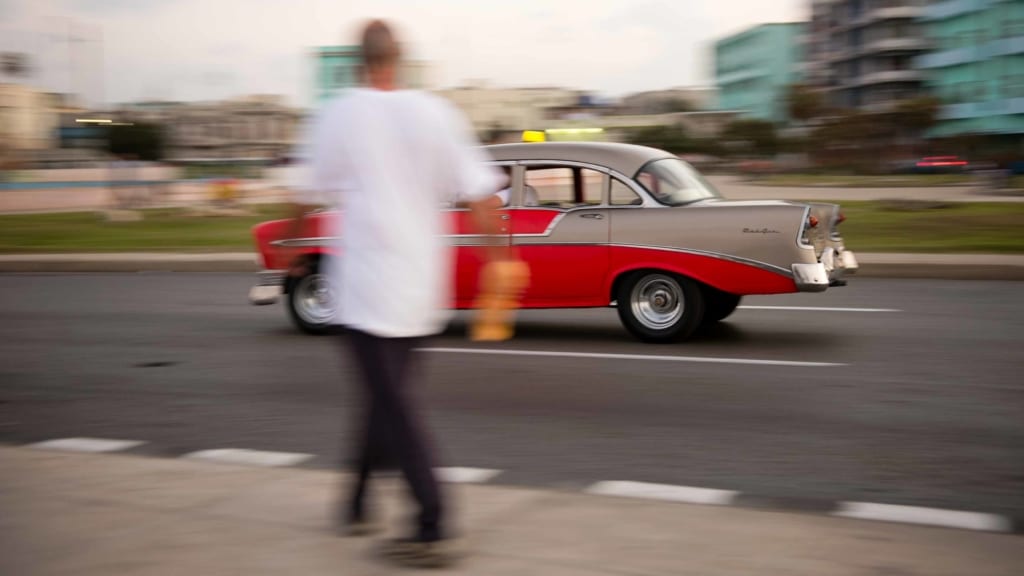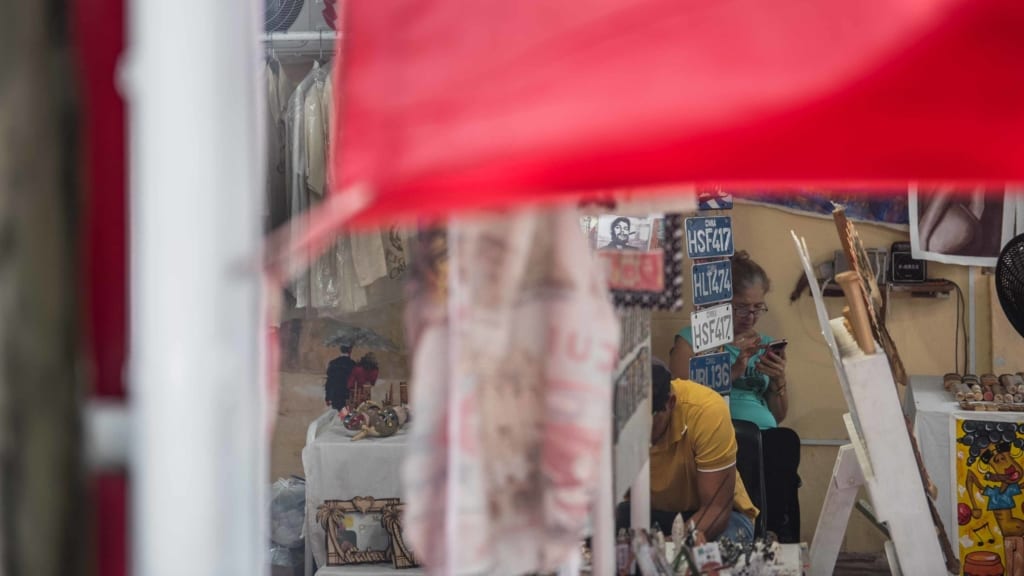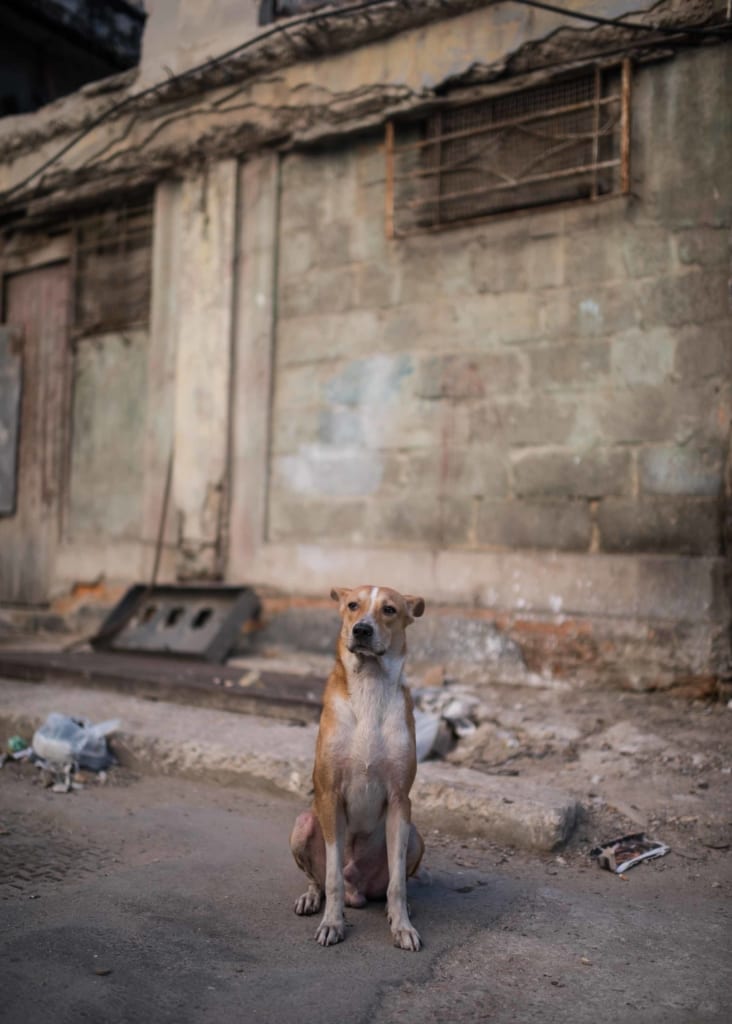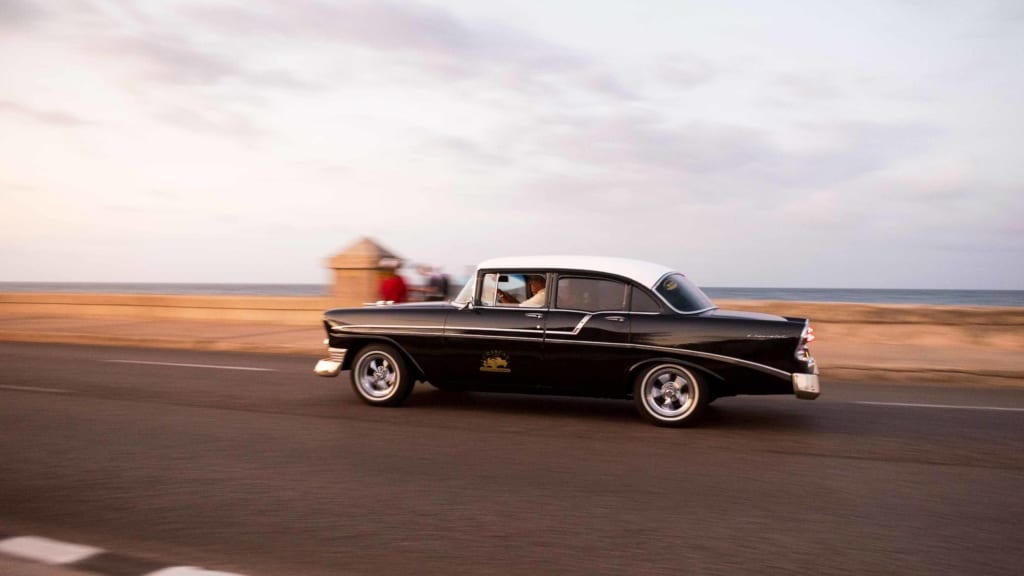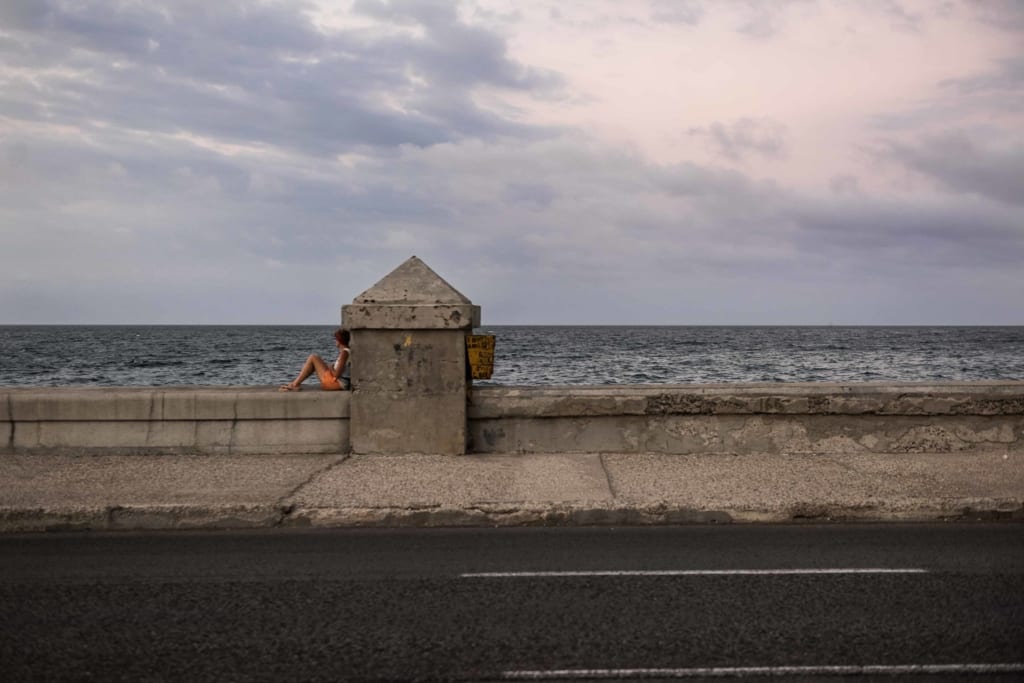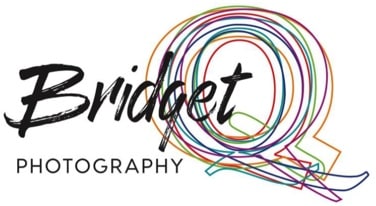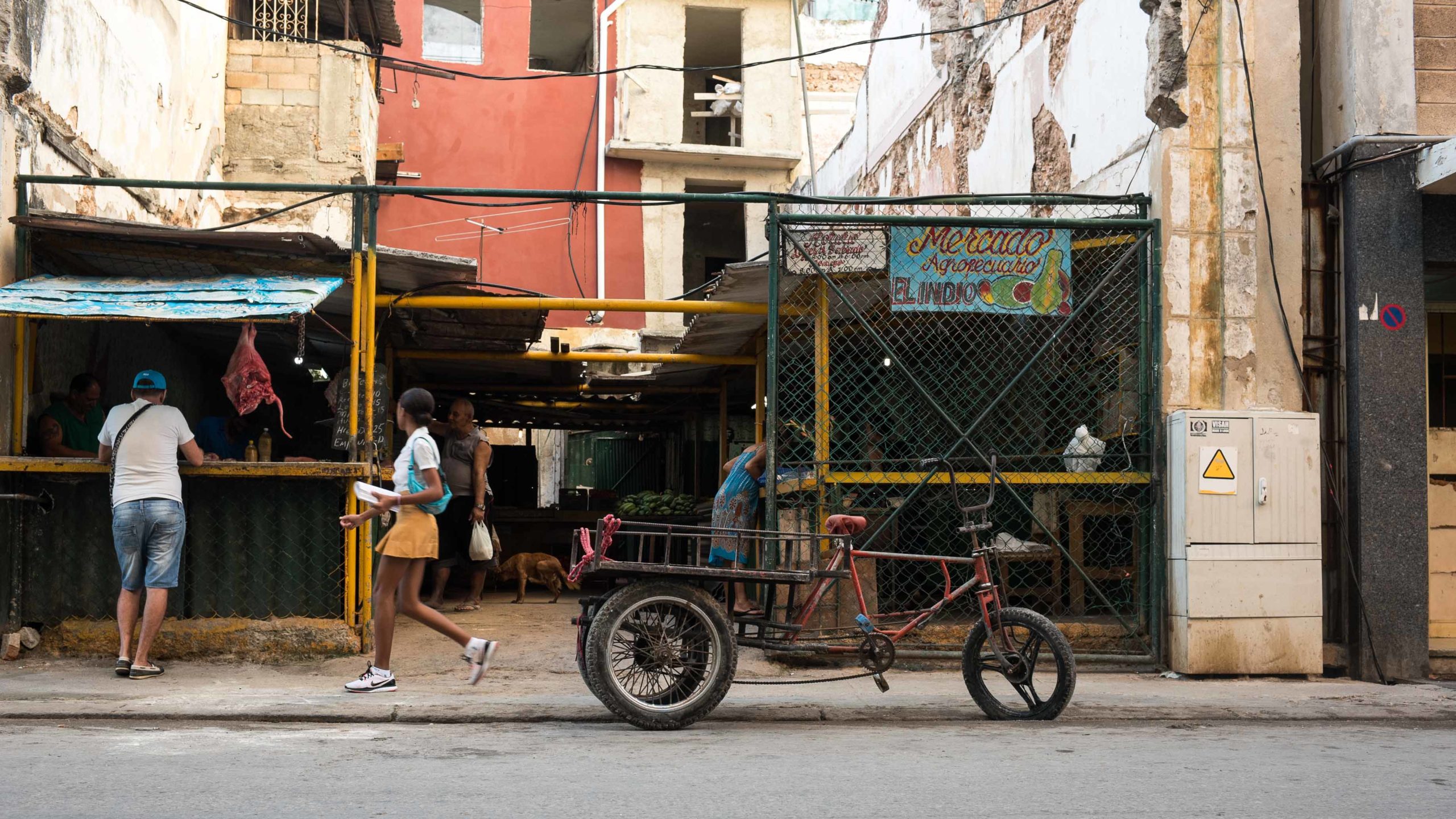LaHabana
Martes a Jueves
I was up with the first rooster’s crow. A blanket of light glowed dimly above the horizon, clinging to the statues, structures and palm fronds that were still silhouetted in the early dawn.
From our 6th floor balcony I could see two figures walking down Calle Industria in the direction of the “point,” where people stood in line to crowd into a passing taxi. The rumble of a few antique cars echoed up from the surrounding streets. Lights were on sporadically throughout the city, but most windows were still dark. The rooster crowed again, this time waking up his compañeros who joined him in sounding the alarm. It was 6AM.
This series of images of La Habana Vieja (Old Havana) was shot over three days as we traveled in and out Cuba’s capital during our 5-day visit. While this was a spontaneous, spur of the moment trip, it was actually 17 years in the making. I was on my way to Castro’s Cuba in 2003 when relations between the US and Cuba took a(nother) sudden left turn, and George Bush cancelled my travel permission. This time around I was determined to get there and to be as prepared as possible when I did. In the few weeks before we left I read and watched as much as I could about Cuban history, the Cuban Revolution, and current events. I talked to people who had been there. I even reached out to several Cubans (including a prominent photographer) to get their two cents and to make plans so that we would be “in it” when we got there. But it didn’t matter.
It didn’t matter that I speak Spanish, nor that I have visited and lived in other parts of Central and South America. It didn’t matter that could probably have led a guided tour as soon as I got off the plane. No amount of preparation could have readied me for how it felt to actually be in Cuba. I realized almost immediately that I felt like more of an outsider than I ever have when traveling abroad. Not that I wasn’t welcome, but that I was all kinds of things that would never, ever, be “Cuban.”
This realization, and the subsequently heightened self-awareness of myself as a photographer had a strong influence on my ability to take photos while we were there. There are images that I missed capturing because I hesitated in the moment and now regret not documenting. There were other situations in which I was torn about photographing a subject even while I clicked the shutter. There are still other instances that I chose not to photograph at all because I felt that it would have minimized the existence of the people in them.
I can’t tell how much of what I felt in Havana was real and how much of it was my own imposed (maybe paranoiac?) feelings about being perceived as just another tourist, (and an American one at that) in Cuba. It was hard for me not to feel that way. In a place where there is so much racial and economic disparity, here I come as the privileged, white American whose country can be seen as responsible (at least in part) for the daily struggles of Cuban life. And I have a camera in my hand to take pictures of all of it. Just like one of those daiquiri-drinking, cigar-smoking, cruising around like I own the place tourists (you may sense here that I hold a certain animosity for American tourists in Latin American countries – you would be right).
Now don’t get me wrong, while we were in Cuba we did ride in some crazy cars, Mike smoked Cohibas, and he definitely drank some fruity frozen drinks (don’t worry, its ok because Hemingway drank them too). But I felt in many ways that if I wanted to do something other than “what tourists do in Cuba,” I was disappointing our hosts. If I wanted to see the country like a local I was confusing them, and if I stayed within their expectations of what I should be, I wasn’t being true to myself. I had a hard time figuring out where that left me.
Thankfully, for the most part we were able to avoid the “made for tourist” areas like the plague. And we were able to spend quality time with the people we met, learning as much as we could about Cuba through their eyes in the short time we had together. This of course meant pushing the limits of Mike’s comfort zone from time to time, and even getting in over my head while trying to go out for ice cream (the most classist experience I have ever had in my life – a long story but a good one). But, even after a slightly scary “Bridget Jones at the airport in Thailand” moment on our way our of the country, it all worked out in the end, and we now have friends in Cuba.
While I’m still struggling with many aspects of our trip to Cuba, I am already looking for a way back. The “coexistence” of history and the present, of repression and expression, of the government and the pueblo, is fascinating. The entrepreneurial nature and courage of many young Cubans is inspiring. The influence of open (albeit restricted) access to the internet is affecting immeasurable change on a daily basis across the island. While 17 years ago I planned to visit a Cuba under Castro, I am very grateful to have known the Cuba that we visited last week. With the way things are going, the “made for tourist Cuba” may always be there, but the Cuba that we encountered, our little piece of Cuba, has already come and gone.
